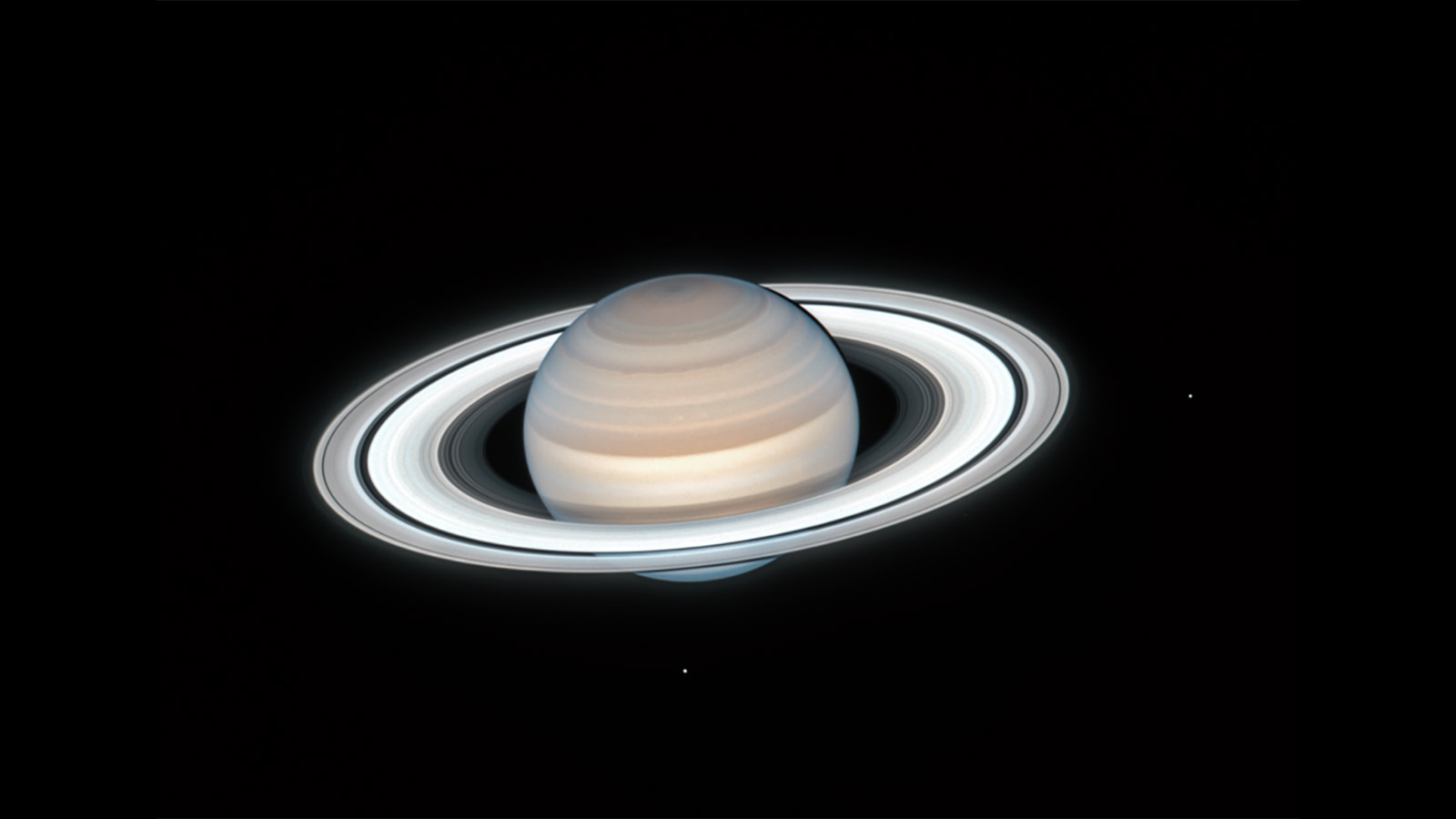Ringquake reveals unexpected details about Saturn's core
Turns out we can tell a lot by looking at Saturn's rings

Scientists studying data gathered by NASA's Cassini space probe discovered ripples in Saturn's rings that could not be explained by Saturn's moons, leading to speculation that the planet's core is more soupy than solid – and much larger than previously thought.
Researchers at Caltech published the new study in Nature Astronomy this week revealing that data gathered by the Cassini space probe in 2013 showed distinct, spiraling ripples in Saturn's innermost ring, known as its D-ring.
Unable to account for the ripples based on gravitational influence from Saturn's many moons, the researchers turned to the planet itself when inspiration struck: what if the ripples could be used to model the interior of the planet itself the way earthquakes are used to look inside Earth?
"We used Saturn's rings like a giant seismograph to measure oscillations inside the planet," said Jim Fuller, an assistant professor of theoretical astrophysics at Caltech and the study's co-author, in a statement. "This is the first time we've been able to seismically probe the structure of a gas giant planet, and the results were pretty surprising."
What the ripples told the researchers is that unlike previously believed, Saturn's core isn't a solid sphere like Earth's, but rather a "fuzzy" core without a definite boundary composed of a soupy mix of ice, rock, and metallic fluid. This sludgy core sloshes around the planet's interior, which creates gravitational oscillations that were registered in the planet's innermost ring.
"Saturn is always quaking, but it's subtle," says Christopher Mankovich, a postdoctoral scholar research associate in planetary science and co-author of the new study. "The planet's surface moves about a meter every one to two hours like a slowly rippling lake. Like a seismograph, the rings pick up the gravity disturbances, and the ring particles start to wiggle around."
Even more remarkable is that the Saturn study suggests that the planet's fuzzy core is much larger than we thought, stretching across about 60% of its diameter, and is about 55 times as massive as the Earth. The study also estimates that 17 Earth-masses of the core's make-up is rock and ice, with the rest being liquid hydrogen and helium.
Get daily insight, inspiration and deals in your inbox
Sign up for breaking news, reviews, opinion, top tech deals, and more.
- This photo of a moon-forming disc around an exoplanet puts Saturn to shame
- So long, Cassini: how NASA's space probe changed everything we know about Saturn
- Astro-focused EOS Ra could be Canon's next mirrorless camera
Analysis: the mysterious interior of gas giants is finally starting to take shape
This new study about Saturn's fuzzy core isn't the first indication that the gas giants of the outer solar system are even less solid than we first believed.
While they are obviously giant balls of gas, we had long supposed that the gas giants would have a solid, rocky core made of iron or some other heavy element. NASA's Juno space probe orbiting around Jupiter has also picked up signs the interior of the gas giant was similarly sloshy.
It had long been hypothesized that an ocean of liquid hydrogen surrounded Jupiter's core – and that the pressure of the atmosphere stripped the hydrogen of electrons, creating electric currents that generate Jupiter's massive magnetic field – but Jupiter doesn't have the kind of ring system that Saturn has, so this kind of astro-seismography isn't possible.
These result, paired with what Juno has detected within Jupiter, is a huge step toward a better understanding of the interiors of these massive planets and with that a better understanding of how gas giants formed in the early solar system.

John (He/Him) is the Components Editor here at TechRadar and he is also a programmer, gamer, activist, and Brooklyn College alum currently living in Brooklyn, NY.
Named by the CTA as a CES 2020 Media Trailblazer for his science and technology reporting, John specializes in all areas of computer science, including industry news, hardware reviews, PC gaming, as well as general science writing and the social impact of the tech industry.
You can find him online on Bluesky @johnloeffler.bsky.social